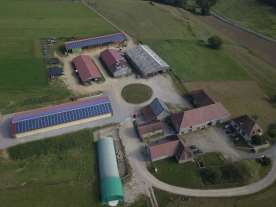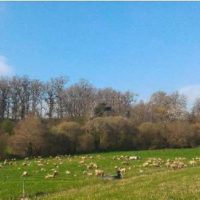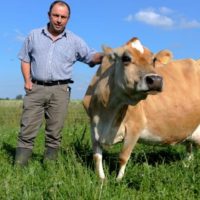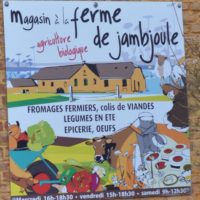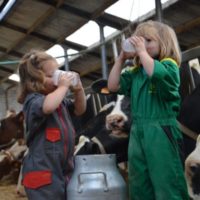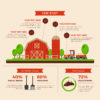Description
Background
The “CIIRPO” (Inter-Regional Center for Information and Research in Ovine Production) is currently carrying out a test on cell grazing.
The aim is to develop as much grazing as possible in the system by restricting forage crops thanks to cell grazing. It reduces costs by improving grazing, reducing harvests and reducing investments in equipment / buildings.
The objective here is to compare the management of the herd between cell grazing and traditional rotational grazing on different aspects: time, costs, grass growth, parasitism… Thus a batch of ewes is managed with traditional rotational grazing (5- 6 days paddock) and another batch with cell grazing.
Detailed description
Cell grazing is defined as: “Developing a system based on maximum grazing by limiting forage crops through cell grazing”.
Since September 2016, ewes graze 1 to 2 days per cell depending on the grass growth. The size and number of cells are also adapted depending on the grass growth and the instantaneous stocking rate.
The animals return to the cell 21 days later in spring until 35 days in summer / winter.
The instantaneous stocking rate is 150 to 600 ewes on 1 ha depending on the season.
The ewes graze all year round.
Results
With this grazing technique, all grass have been used, it was not needed to grind any leftovers.
However, there are also fewer crops available for fodder.
The daily work is greatly reduced in winter thanks to the winter grazing but the technique includes much work for setting up the fences.
The technique has allowed them to gain in concentrates and to maintain the performances of the animals.
Adoption criteria
This technique works at CIIRPO because the farmers are rigorous. It requires a minimum technical supervision at the beginning of the practice.
The farmers need to be equipped for watering and for distribution if they want to give concentrates while grazing and to have parcels close enough to one another.
Future prospects
Cell grazing is a good technique but it requires rigor and precision.
Currently the biggest threat for this innovation but also for grass farming in general is drought.
Indeed, adapting grasslands to climatic conditions will be a great stake for the future.
It is necessary to look for ways to adapt grasslands to the lack of summer water if we want to continue to value and promote “all grass” systems.
In addition most grassland and therefore the cells plots do not have shadows, so it is necessary to put great attention in animal welfare.
Moreover, lambing period is critical when ewes are grazing all year because of predation risks.
Farm description
- 1.5 annual work unit
- Sheep breeding
- 115 LU with 720 ewes of Romane breed, Vendéenne breed and F1 crossing
- 95 ha with 90 ha of forage crops : 43 ha of permanent grassland and 47 ha of temporary grassland
- Soil type: loamy-sand
- Production: slaughter of 4 months-old lambs, 18.5 kg of carcass weight on average and average ranking R3
Climate
Temperate oceanic climate with fairly severe winters in the area and in recent years many summer droughts.

